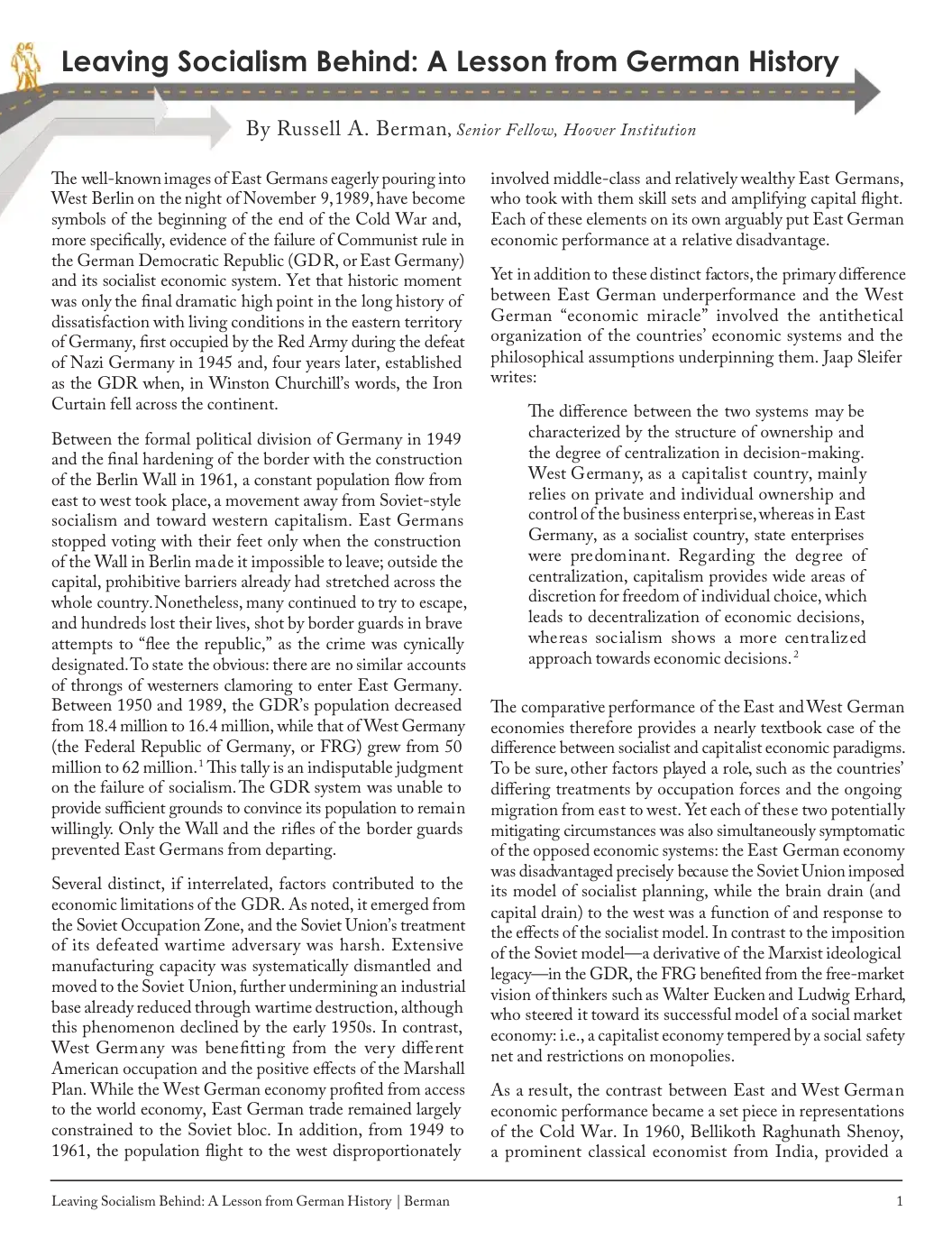Featured Publication
“Leaving Socialism Behind: A Lesson from German History” 
by Russell Berman
The images of East Germans eagerly pouring into West Berlin on the night of November 9, 1989, have become symbols of the beginning of the end of the Cold War and, more specifically, evidence of the failure of communist rule in the German Democratic Republic (GDR, or East Germany) and its socialist economic system. Yet that historic moment was only the final dramatic high point in the long history of dissatisfaction with living conditions in the eastern territory of Germany, first occupied by the Red Army during the defeat of Nazi Germany in 1945 and, four years later, established as the GDR when, in Winston Churchill’s words, the Iron Curtain fell across the continent.
Between the formal political division of Germany in 1949 and the final hardening of the border with the construction of the Berlin Wall in 1961, a constant population flow from east to west took place, a movement away from Soviet-style socialism and toward Western capitalism. East Germans stopped voting with their feet only when the construction of the Wall in Berlin made it impossible to leave; outside the capital, prohibitive barriers already had stretched across the whole country. Nonetheless, many continued to try to escape, and hundreds lost their lives, shot by border guards in brave attempts to “flee the republic,” as the crime was cynically designated.
To state the obvious: there are no similar accounts of throngs of westerners clamoring to enter East Germany. Between 1950 and 1989, the GDR’s population decreased from 18.4 million to 16.4 million, while that of West Germany (the Federal Republic of Germany, or FRG) grew from 50 million to 62 million. This tally is an indisputable judgment on the failure of socialism. The GDR system was unable to persuade its population to remain willingly. Only the Wall and the rifles of the border guards prevented East Germans from departing.
Several distinct, if interrelated, factors contributed to the economic limitations of the GDR. As noted, it emerged from the Soviet Occupation Zone, and the Soviet Union’s treatment of its defeated wartime adversary was harsh. Extensive manufacturing capacity was systematically dismantled and moved to the Soviet Union, further undermining an industrial base already reduced through wartime destruction, although this phenomenon declined by the early 1950s. In contrast, West Germany was benefiting from the very different American occupation and the positive effects of the Marshall Plan. While the West German economy profited from access to the world economy, East German trade remained largely constrained to the Soviet bloc. In addition, from 1949 to 1961, the population flight to the west disproportionately involved middle-class and relatively wealthy East Germans, who took with them skill sets and amplifying capital flight. Each of these elements on its own arguably put East German economic performance at a relative disadvantage.
To read the rest of the essay, click here.
